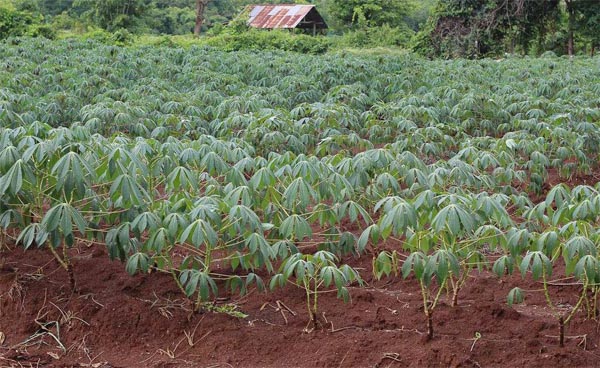- هذا الموضوع فارغ.
- الكاتبالمشاركات
- فبراير 28, 2025 الساعة 10:34 م #576626

Cassava, also known as manioc or yuca, is a hardy root crop that thrives in tropical and subtropical regions. It’s an important staple food, providing a significant source of carbohydrates in many developing countries.
Cassava can be grown with relatively minimal care and resources, making it an ideal crop for smallholder farmers. In this article, we will explore the essential steps and considerations for successfully growing cassava, from selecting the right planting materials to harvesting the roots.
1. Choose The Right Variety Of Cassava
Before planting cassava, selecting the right variety is crucial for successful cultivation. Cassava comes in two main types: sweet and bitter.
Sweet cassava is less toxic and is typically consumed directly, while bitter cassava contains higher levels of cyanogenic compounds, which must be processed to make it safe for consumption.
Farmers should also consider the climate and soil type, as some varieties perform better in different conditions. Consult local agricultural experts or agricultural extension services to determine the best variety suited to your region and market demands.
2. Prepare The Soil For Planting
Cassava grows best in well-drained, fertile soils with a pH level between 5.5 and 7.0. The soil should be loose and deep to allow the roots to spread out and grow properly. Before planting, clear the land of any weeds, rocks, or debris that may hinder root development.
Plowing or tilling the soil to a depth of 20 to 30 cm will help create a fine seedbed for planting. Organic matter such as compost or well-rotted manure can be incorporated into the soil to improve fertility and structure, providing essential nutrients for the cassava plants.
3. Plant The Cassava Cuttings Correctly
Cassava is propagated through cuttings, not seeds. The best planting material comes from healthy, disease-free cassava plants.
Choose healthy stems that are about 20-30 cm long, with at least three nodes, and cut them into sections. Each section will act as a cutting for a new plant. Plant the cuttings at a 45-degree angle, ensuring that the nodes are buried in the soil, with about two-thirds of the cutting in the ground.
Space the cuttings 1 meter apart in rows, leaving enough space between the rows to allow for easy maintenance and harvesting. Planting at the right depth and angle ensures the cuttings establish well and begin rooting quickly.
4. Provide Adequate Care And Maintenance
Once planted, cassava requires regular care to ensure healthy growth. Watering is important, especially during the early stages of growth. However, cassava is drought-tolerant, so once established, it requires minimal irrigation.
Regular weeding is crucial to prevent competition for nutrients and space. Mulching the soil around the plants helps retain moisture, suppress weeds, and maintain soil fertility. Additionally, cassava plants benefit from fertilization, especially in nutrient-poor soils.
Applying balanced fertilizers rich in nitrogen, phosphorus, and potassium will promote vigorous growth and root development.
Cassava is also susceptible to pests and diseases, including the cassava mealybug, cassava mosaic virus, and root rot. Regularly inspect the plants for signs of disease or pest infestation and take appropriate control measures, such as using organic pesticides or removing affected plants.
5. Harvest The Cassava Roots
Cassava has a relatively long growing cycle, typically taking between 8 to 18 months to mature, depending on the variety and growing conditions.
It is essential to monitor the plants closely as they approach maturity. The leaves of cassava will begin to yellow and fall off, signaling that the roots are ready for harvest.
The roots should be carefully dug up to avoid damage, as cassava roots are delicate. Harvesting too early can result in smaller yields, while waiting too long can lead to poor-quality roots or rotting. After harvesting, the roots should be handled with care and processed as soon as possible to prevent them from spoiling.
In conclusion, growing cassava can be a rewarding agricultural venture, offering a reliable source of food and income. By selecting the right variety, preparing the soil properly, planting the cuttings correctly, providing adequate care, and harvesting at the right time, farmers can enjoy a successful cassava crop.
With minimal investment in resources and maintenance, cassava is an ideal crop for both small-scale and commercial farming. By following the necessary steps and maintaining good farming practices, cassava can thrive and provide substantial yields for farmers and communities alike.
Read Also: How to cultivate cassava: a comprehensive guide for successful farming
- الكاتبالمشاركات
- يجب تسجيل الدخول للرد على هذا الموضوع.

